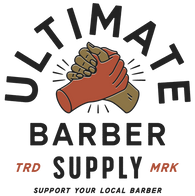FAQ

- What are the different types of hair pomade?
There are several types of hair pomades available, and the popularity of each type varies depending on personal preference and hair type. Some of the most popular types of hair pomades include:
-
Oil-based pomade: These are the traditional pomades that have been used for decades. They contain petroleum jelly or mineral oil as the main ingredient and provide a strong hold that lasts all day. They also give a shiny finish to the hair.
-
Water-based pomade: These are modern versions of pomades that are easier to wash out than oil-based ones. They are made with water as the main ingredient and provide a medium to strong hold. They also give a matte finish to the hair.
-
Clay pomade: These pomades are made with natural clay as the main ingredient and provide a firm hold. They are good for creating textured hairstyles and have a matte finish.
-
Paste pomade: These are lighter than traditional pomades and have a creamy texture. They provide a flexible hold and are good for creating messy or tousled hairstyles.
The most popular type of hair pomade can vary depending on trends and personal preferences. However, in recent years, water-based pomades have become increasingly popular due to their ease of use and ability to provide a strong hold without the greasy feel of traditional oil-based pomades.
- I have never used pomade before. How do I use hair pomade?
Here are the general steps on how to use hair pomade:
-
Start with clean, towel-dried hair: Pomade works best on slightly damp hair, so make sure your hair is not completely dry before applying it.
-
Take a small amount of pomade: Start with a small amount of pomade, about the size of a pea. You can always add more if needed.
-
Rub the pomade between your palms: Rub the pomade between your palms to warm it up and make it easier to apply.
-
Apply the pomade: Apply the pomade evenly throughout your hair, focusing on the roots and working your way to the tips. Use your fingers or a comb to distribute the pomade evenly and style your hair as desired.
-
Add more pomade if needed: If you need more hold or shine, add a small amount of pomade and repeat steps 3 and 4.
-
Style your hair: Style your hair as desired, using your fingers or a comb to create your desired look.
-
Wash out the pomade: At the end of the day, make sure to wash out the pomade from your hair using shampoo and warm water.
Note: The amount of pomade you need and the styling technique will depend on your hair type and the style you are trying to achieve. It may take some experimentation to find the right amount of pomade and styling technique that works best for you.
- What is the difference between natural and normal pomade?
The main difference between natural pomade and normal pomade is the ingredients used to make them. Natural pomades are made with natural ingredients such as beeswax, shea butter, and essential oils, while normal pomades contain synthetic ingredients such as petroleum, mineral oil, and artificial fragrances.
Here are some differences between natural pomade and normal pomade:
-
Ingredients: As mentioned above, natural pomades contain natural ingredients, while normal pomades contain synthetic ingredients.
-
Hold: Natural pomades provide a more flexible hold than normal pomades. They are good for creating messy or textured hairstyles. Normal pomades, on the other hand, provide a stronger hold and are better suited for creating more defined hairstyles.
-
Finish: Natural pomades provide a matte finish, while normal pomades provide a shiny finish.
-
Washability: Natural pomades are generally easier to wash out than normal pomades, which can be more difficult to remove from the hair.
-
Scalp and hair health: Natural pomades are generally better for scalp and hair health as they contain natural ingredients that are less likely to cause irritation or damage to the hair. Normal pomades can contain ingredients that may cause scalp irritation or hair damage over time.
Ultimately, the choice between natural pomade and normal pomade depends on personal preference and hair type. If you have sensitive skin or are concerned about using synthetic ingredients, natural pomade may be a better option. If you are looking for a stronger hold or a shiny finish, normal pomade may be a better choice.
